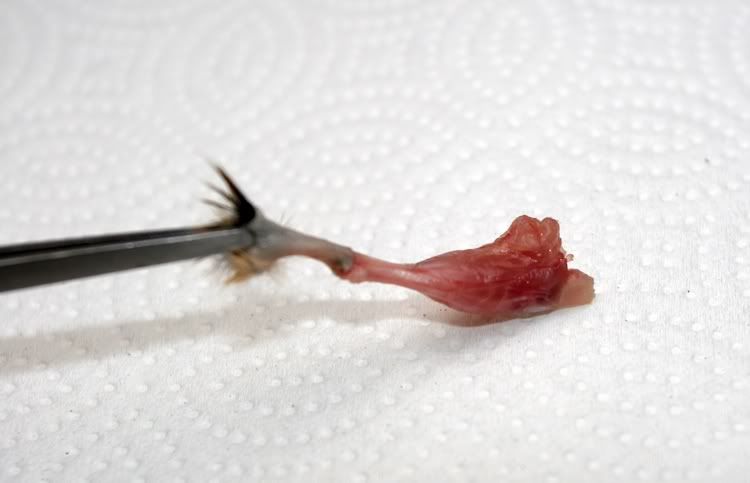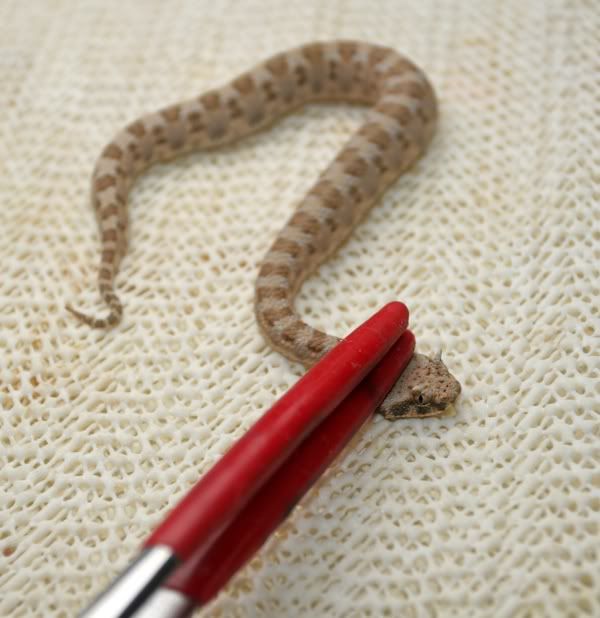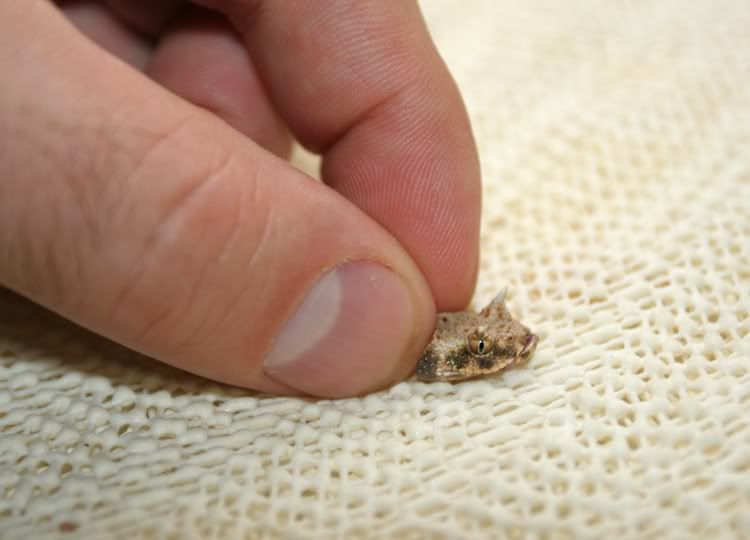This is a blog that I wrote a few years back. Since this forum limits the number of images per post to eight, I had to eliminate some of the pics that were part of the original blog, but I think it still illustrates all of the main steps. Hopefully some of the members on this site can benefit from the information.
A lot of keepers are hesitant to try to force-feed neonate snakes that are not accepting anything that is offered to them. Over the years, I've managed to fine-tune this approach into a low-stress method that is not just suitable as a last resort, but is a very effective alternative to getting non-feeding neonates of many species started. Depending on the species and the individual specimen involved, it can take anything from a single force-feeding session to several months to get a non-feeding neonate to start feeding on its own.
For those who have ever contemplated to try to force-feed a neonate snake, but felt unsure about how to go about it, I decided to put together this small tutorial. Please note that while I used a neonate desert horned viper (
Cerastes cerastes) as the example for this tutorial, the same technique applies to just about every species of snake, with the exception of atractaspidines (mole vipers).
Materials needed:
- non-feeding neonate
- thawed prey item of choice
- sharp knife
- tweezers
- padded forceps
- shelf liner
Depending on the size of the snake, anything from pinkie to hopper mice are suitable for this. As a general rule, you always want to use a
smaller prey item than you would provide to the snake if it was feeding on its own. One approach that I have found to work quite well for very small neonates is to feed the thigh of an adult mouse, as an alternative to force-feeding a small pinkie mouse. The thigh of an adult mouse contains a large bone (femur), and a number of large skeletal muscles, including the quadriceps complex, adductor magnus, and semimembranosus. The nutritional value of the adult thigh is thus substantial, and provides an excellent alternative to a pinkie mouse, which is essentially just a tiny bag of viscera (soft tissue). In this example, I demonstrate how to obtain and prepare the adult thigh for force-feeding.
1. Obtain a thawed or prekilled adult mouse. For the purpose of obtaining the thigh, the larger the mouse, the better it is. Even tiny neonates, such as eyelash vipers (
Bothriechis schlegelii) or sidewinder rattlesnakes (
Crotalus cerastes) can be force-fed the adult thigh of a large adult mouse.
2. Remove the fur and skin from the thigh. This is easily achieved by pulling the leg of the mouse away from its body, and simultaneously using your other hand to push the fur and skin towards the mouse's body. If done right, this feels a bit like rolling up a sleeve, and only takes a second to do.
3. Use a sharp (!) knife to separate the leg from the pelvis. This may create a cracking sound when you cut through the bone, so if you're squeamish, well, you probably shouldn't attempt this method to begin with.
4. Use the sharp knife to cut off the lower leg portion at the patella (knee). Whether you cut it exactly at the knee or below it (at the tibia/fibula) depends on how large you want the food item to be. For very small neonates, I cut it right at the knee. For slightly larger neonates, I place the cut a bit below that point.
5. Pull off the remaining fur, using the tweezers. This is easily done, and feels a bit like pulling off a tight glove. Once the last of the fur is removed, there should be nothing but clean bone and muscle. A mouse drumstick, so to speak.

6. Now its time to set the stage. I use the shelf liner to provide a surface with traction, which helps when you are securing the snake behind the head. Snakes are masters at weaseling out of one's grip, and great care should be taken to ensure that that is not possible. Place the snake on the shelf liner, and use the padded forceps to pin it down, right on top of the head. The amount of pressure that is required to securely pin down the animal without exerting too much pressure on its jaw varies, depending on the type of snake. I recommend practicing this a number of times, without actually touching the snake by hand. This step is obviously of lesser importance when you're dealing with a nonvenomous species, but a quick pin and a smooth transition can still make your life easier. Another point to note is that snakes generally do not appreciate being pinned for more than a brief moment. If you sit there and admire your own work for a moment, you are likely to see the snake freak out and turn into a contortionist, at which point you are well advised to let the animal go.

7. This next step is critical, particularly if you're working with a venomous species. When the snake is securely pinned, use your thumb and index finger to hold the snake behind the head. Do
not lift the snake off the ground. Instead, use your thumb and index fingers to exert downward pressure to keep the head immobilized. This should be accomplished in an instant in order to keep the snake from trying to bite you. As soon as that is accomplished, you need to position the rest of the snake's body to run through the inside of your loosely closed fist. This prevents the snake from whipping the rest of its body around over its head (and defecating in the process, smearing feces and musk all over its own head), which is typically its next line of defense. Ideally, you're pulling the snake's body ever so slightly into the direction of the inside of your loosely closed fist, which in turn keeps just enough backwards pressure on its head to immobilize it very effectively. Getting this right is not trivial and takes practice, so do not get frustrated if the first few attempts are a bit of a battle. Also, the more muscular the snake, the more difficult this is typically going to be.

8. Take the prey item with the tweezers, and gently bump the snake's mouth. Some specimens will angrily bite down on the prey, which makes your job easy. Others will keep their mouth tightly shut in defiance, in which case you have to persuade them to do otherwise. A few repeated bumps against the snout will often do the trick. As soon as the mouth opens, gently push the prey item into its mouth. Some people prefer to abandon the process here, in the hope that the snake will proceed to swallow the prey on its own (i.e., assist feeding). Personally, I find this to be a waste of time, because at this point the vast majority of the work is already done. It can be rather annoying to wait several minutes for the snake to swallow the prey, only to see it rejecting it. Instead, I gently push the prey just beyond the jaw, then use the padded forceps (or my finger) to pin down the head again, and use my free hand to gently and slowly massage the prey all the way into the stomach, which is usually located about 1/3 of the way down the body.

When done correctly, this technique only takes less than a minute per specimen, and puts very little stress on the animal. I've used this successfully on many different neonates of different species, from green tree pythons (
Morelia viridis) to Egyptian cobras (
Naja haje).
I hope some of you may find this helpful. Let me know if you have any further questions.



